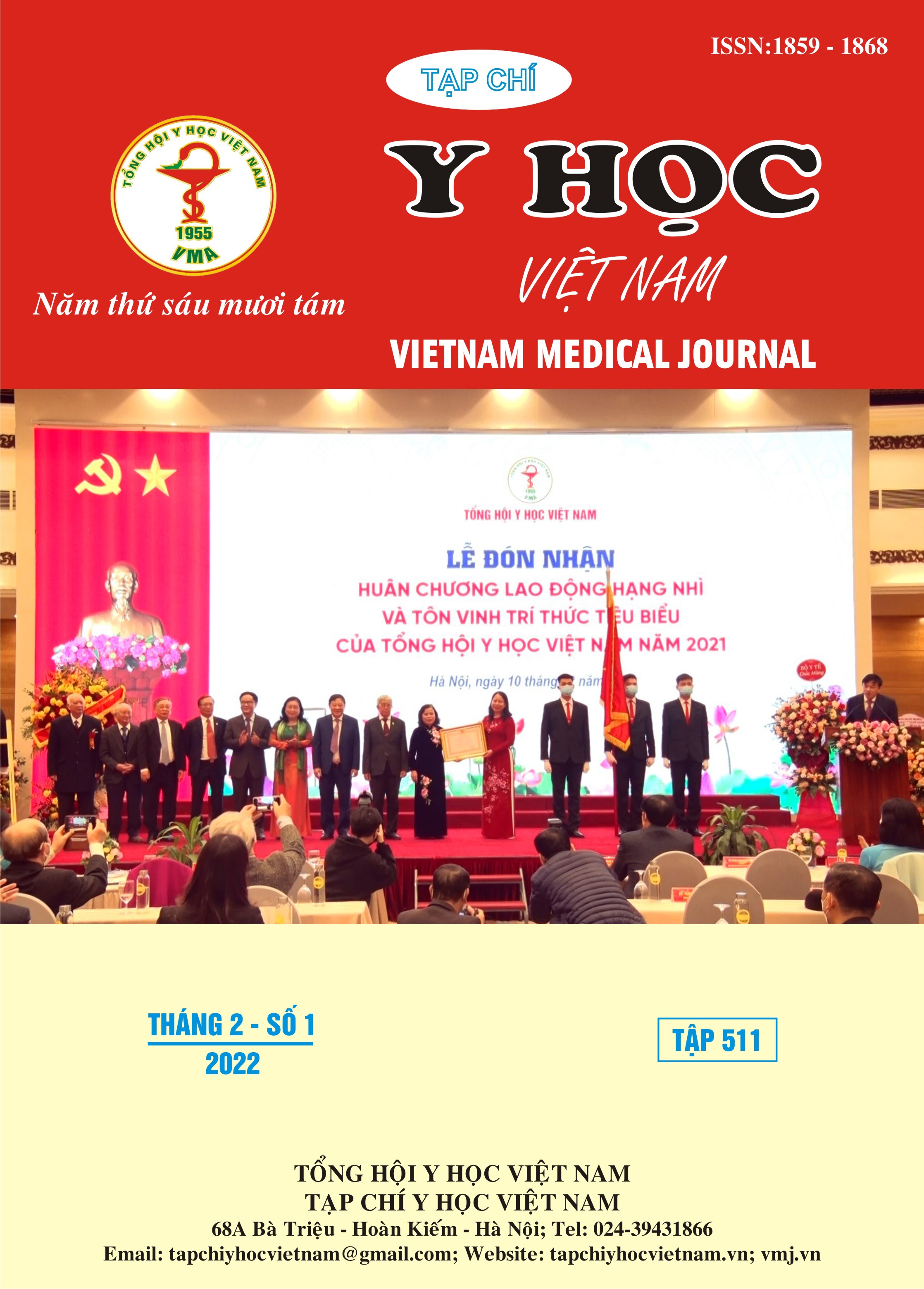DESCRIBE THE CLINICAL FEATURES AND IMAGES OF COMPUTER TOMOGRAPHY IN RUPTURED BRAIN ARTERIOVENOUS MALFORMATION
Main Article Content
Abstract
Objective: Describe the clinical features and images of computer tomography in ruptured brain arteriovenous malformation. Subject and method: Prospectively, the research group of 41 patients was diagnosed with cerebral hemorrhage in rupture brain AVM patients, the control group included 183 patients with non-AVM hemorrhagic stroke. Result: Hemorrhagic stroke in rupture brain AVM was found in 53.67% at the age of 20-40, non-ruptured hemorrhagic stroke had a high rate at the age of 40-60, was 42.62%. Intracerebral bleeding due to rupture brain AVM had glasgow 13.35±1.57 points, mRS 1.03±0.78 points, CT image with bleeding in cerebral cortex 80.49%, volume hematoma over 30 ml was 12.19%, with calcification 26.83%. In patients with stroke without rupture of AVM, the corresponding rates were: glasgow 9.61 ± 1.72 points, mRS 3.11 ± 1.27 points, cortical bleeding 9.23%, possible hematoma volume > 30 ml 40.98%, calcification score is 1.64%. Conclusion: Bleeding in brain AVM was common in people 20-40 years old, the clinical degree according to mild glasgow score, small volume of hematoma, or calcification score and better recovery ability compared with hemorrhagic stroke patients not due to rupture brain AVM.
Article Details
Keywords
brain arteriovenous malformation, rupture brain arteriovenous malformation
References
2. Nguyễn Ngọc Cương (2020). Đánh giá kết quả điều trị nút mạch dị dạng động tĩnh mạch não đã vỡ bằng dung dịch kết tủa không ái nước (phil), Luận án Tiến sỹ, Đại học Y Hà Nội.
3. Nguyễn Minh Hiện, Đỗ Đức Thuần, Đặng Phúc Đức và CS. (2010). Nghiên cứu đặc điểm lâm sàng đột quỵ chảy máu não tại Khoa Đột quỵ Bệnh viện 103, Tạp chí Y-Dược học Lâm sàng 108, Tập 5, số đặc biệt, hội nghị khoa học chuyên ngành đột quỵ toàn quốc 2010(ISSN 1859-2872): 104-110.
4. Bir S.C., Maiti T.K., Konar S. et al. (2016). Overall outcomes following early interventions for intracranial arteriovenous malformations with hematomas, J Clin Neurosci, 23: 95-100.
5. Mjoli N., Le Feuvre D., Taylor A. (2011). Bleeding source identification and treatment in brain arteriovenous malformations, Interventional neuroradiology : journal of peritherapeutic neuroradiology, surgical procedures and related neurosciences, 17(3): 323-330.
6. Chen Q., Tang J., Tan L. et al. (2015). Intracerebral Hematoma Contributes to Hydrocephalus After Intraventricular Hemorrhage via Aggravating Iron Accumulation, 46(10): 2902-2908.
7. Hu R., Zhang C., Xia J. et al. (2021). Long-term Outcomes and Risk Factors Related to Hydrocephalus After Intracerebral Hemorrhage, Translational Stroke Research, 12(1): 31-38.


